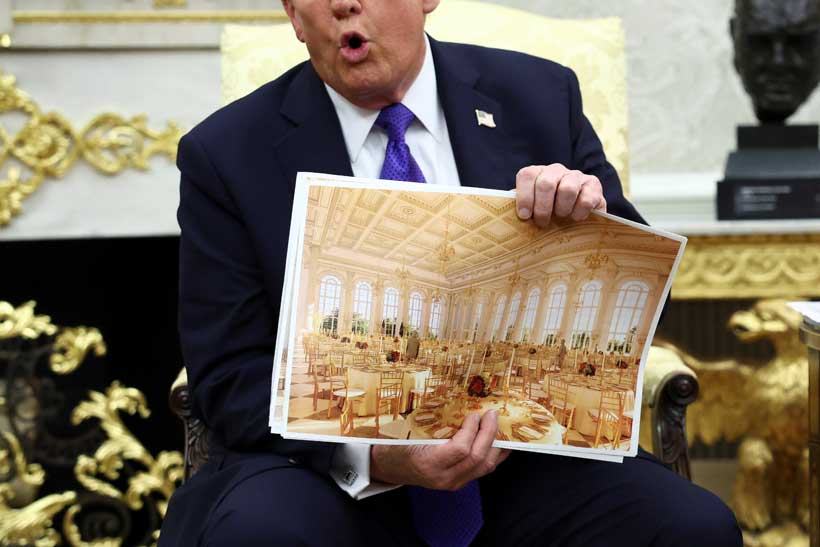In a recent meeting with donors, President Donald Trump shared his excitement about a new ballroom project at the White House, mentioning that he could begin construction immediately without needing approvals. This led to the demolition of the East Wing of the White House, which sparked outrage among historians, preservationists, and the public, as many considered it a significant loss of history for a revered building. Trump’s undertaking represents a shift away from traditional norms, which historians view as a developer’s mindset rather than that of a steward of national heritage.
Historians noted that Trump’s desire to leave a huge, tangible legacy resembles the mindset of a businessman seeking fame, with some comparing it to building a “Trump Tower. ” This ballroom project is estimated to cost $300 million, with support from large tech companies like Apple and Amazon. Trump expressed his excitement about the project’s location, emphasizing its uniqueness. Though his press secretary mentioned the ballroom would be named, Trump stated it would not bear his name, yet it is expected to be closely associated with him.
Trump has already altered the White House’s décor and layout in various ways, leaving his mark with golden touches in the Oval Office and decorative changes that resemble his Mar-a-Lago resort. He has ambitious plans beyond the ballroom, including taking control of local cultural institutions and creating a grand monument for the nation’s 250th anniversary.
Supporters of Trump described him as a visionary with a talent for seeing potential in places, enhancing perceptions of the White House. They rejected criticisms of the ballroom as exaggerated. They praised Trump’s previous works and defended his discretion in the project, noting it would be a lasting addition to the nation’s capital.
This ballroom’s funding model is notable, as it relies on private donations rather than Congressional approval, which is typical for such renovations. Although the White House claimed it would submit building designs for regulatory review, it emphasized that the overseeing body does not regulate demolition processes. This reflects Trump’s style of governance, favoring executive power and minimal public dialogue before executing significant changes, as noted by historians.
With information from Reuters


